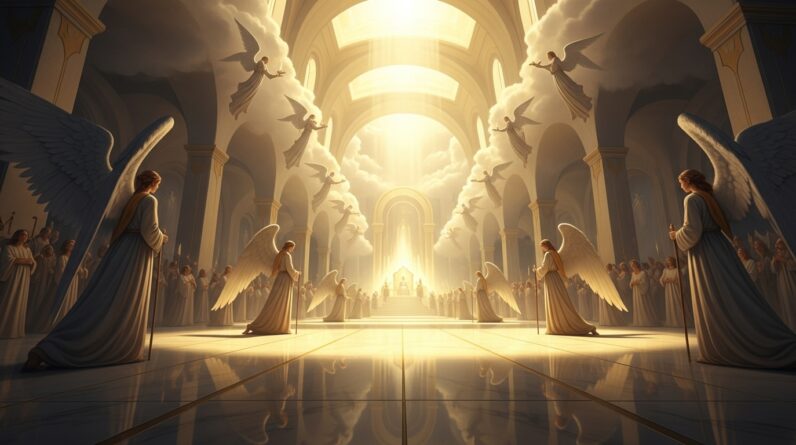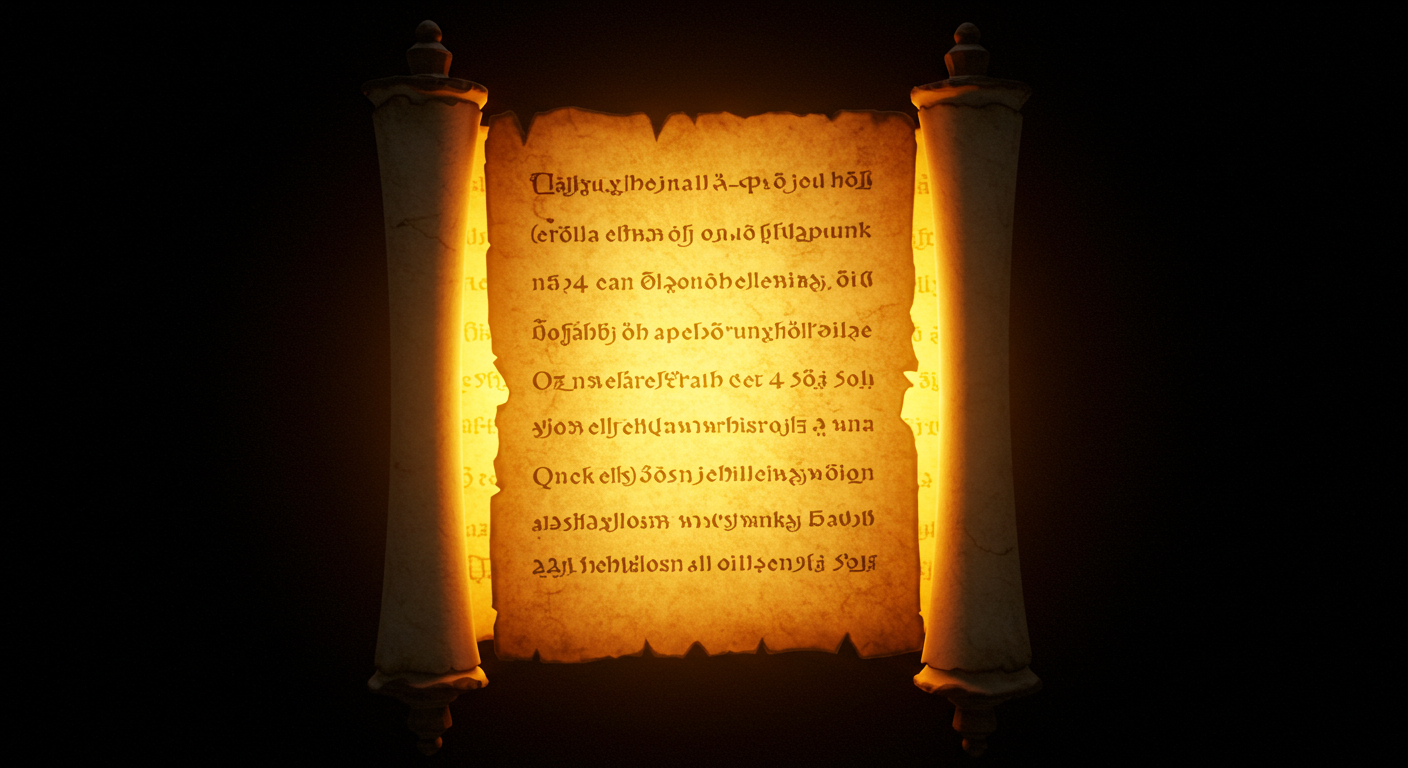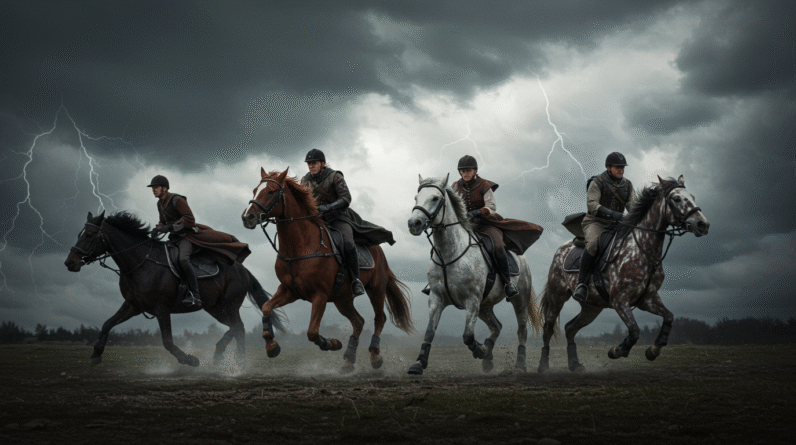Explore the profound symbolism and historical significance of Daniel 8:20’s prophecy. Delve into the vision of the ram and the goat, revealing timeless lessons of faith and divine sovereignty.
The Vision Of The Ram And The Goat: A Prophecy Explained – Daniel 8:20
Welcome, dear reader, to a journey through the intricate and fascinating world of prophetic visions in the Bible. Today, we’re diving deep into one of the captivating prophecies recorded in the Book of Daniel – the vision of the ram and the goat, specifically explained in Daniel 8:20. This prophecy isn’t just a historical recount; it carries significant theological, and spiritual, and moral teachings that continue to resonate with us today.
Introduction to Prophetic Visions
Prophetic visions have been a vital conduit through which God communicated with humanity, imparting divine messages that resonate through the ages. Defined as supernatural images or scenes revealed to prophets in a state of divine inspiration, these visions often carry deep symbolic meanings. They are not mere dreams but are understood as divinely granted glimpses into God’s purposes and plans. Through these visions, prophets could see beyond the ordinary, gaining insight into future events, divine will, and moral imperatives meant to guide the faithful.
God chose visions as one of the primary means of communication to convey messages that were profound and laden with symbolism. This method helped bridge the gap between the divine and the human, providing visuals and imagery that could be interpreted and understood by people of different times and cultures. The historical and cultural milieu in which these visions were given also greatly influenced their form and content. In the Intertestamental Period, during which Daniel lived, various religious, political, and social upheavals were occurring. It was a time when visions served as powerful instruments to provide hope, admonition, and foresight to the Jewish community about their present circumstances and prospects.
Context of Each Prophetic Vision
Scriptural Background
The vision of the ram and the goat is found in Daniel 8:1-27, with the specific interpretative explanation in verse 20. This vision came during the reign of King Belshazzar, marking a turbulent period for the Israelites who were under Babylonian rule. Daniel had already witnessed numerous visions and dreams that depicted the fate of empires and the divine plan for Israel. In this context, the vision of the ram and goat unfolds as a detailed predictive prophecy, setting the stage for monumental historical events.
Prophet’s Role and Mission
Daniel, a Hebrew prophet and a key figure in the Babylonian and Persian courts, played an essential role as an interpreter of divine messages. He was known for his wisdom, faithfulness to God, and ability to decode complex visions and dreams. Tasked with delivering God’s messages to both Jews and Gentile rulers, Daniel faced various challenges, including threats to his life, false accusations, and cultural opposition. Despite these adversities, his commitment and clarity in conveying God’s visions were unwavering.

Vision’s Imagery and Symbolism
In Daniel’s vision, he sees a ram with two horns standing by the Ulai Canal. One horn is higher than the other, and the higher one came up last. The ram charges westward, northward, and southward, doing as it pleased and becoming great. This ram symbolizes the Medo-Persian Empire, with the two horns representing the Median and Persian elements of the empire, one more dominant than the other.
Following the ram, a male goat appears from the west, with a prominent horn between its eyes. The goat swiftly crosses the earth without touching the ground, shattering the ram’s two horns and trampling it. This goat represents the Greek empire, and the prominent horn is Alexander the Great. The goat’s unprecedented speed and power symbolize Alexander’s rapid conquests. Afterward, the goat’s horn breaks and four notable horns rise in its place, signifying the division of Alexander’s empire among his four generals.
This detailed symbolism highlights themes of divine sovereignty, the rise and fall of empires, and God’s ultimate control over historical events.
Theological Significance
Theologically, the vision underscores God’s sovereignty and judgment over nations and empires. It serves as a reminder that no earthly power is everlasting and that divine authority presides over all human history. This prophecy also anticipates the coming of greater promises, including the eventual establishment of God’s everlasting kingdom. Furthermore, it echoes themes of judgment and redemption, reflecting God’s merciful interventions amidst His people’s sufferings.
Interpretation of the Vision’s Message
Immediate Message for the Original Audience
For Daniel’s contemporaries, this vision was a powerful reassurance of God’s omniscience and omnipotence. It was a direct message providing insight into the immediate future – that their current oppressors, the Babylonians, would be overthrown by another empire, and that empire would in turn fall to another. This sequence of events was meant to console and fortify the Israelite community in exile, reassuring them of their people’s vindication and God’s continual presence and plans for their future.
Prophetic Fulfillment
Historically, the fulfillment of this prophecy is well-documented. The Medo-Persian Empire did indeed rise after the Babylonian Empire, symbolized by the ram’s dominance. Following this, Alexander the Great’s Greek Empire swiftly conquered vast territories, represented by the goat’s overpowering and rapid movements. After Alexander’s premature death, his empire was divided among his four generals, precisely aligning with the rise of the four notable horns that replaced the prominent one. This historical fulfillment underscores the accuracy of Daniel’s vision and reaffirms the reliability of biblical prophecy.
Relevance to Modern Readers
To modern believers, this vision provides profound lessons on divine sovereignty and the transient nature of worldly power. It serves as a reminder that, regardless of current circumstances, God’s ultimate authority prevails over human history. For contemporary readers, this prophetic account encourages faith in God’s purposeful handling of world events and reassures believers of the eventual establishment of His eternal kingdom. It also emphasizes the importance of maintaining faith and integrity, much like Daniel, amidst modern challenges and adversities.
Comparative Analysis
Comparison with Other Biblical Visions
When compared to other biblical visions, notably those in the books of Isaiah, Ezekiel, and Revelation, Daniel’s vision shares common apocalyptic themes and use of vivid symbolism. For instance, Ezekiel’s vision of the four creatures with four faces and John’s visions in Revelation also utilize complex symbols to convey divine judgment and future restoration. These visions collectively contribute to the overarching biblical narrative of God’s sovereignty, eschatological fulfillment, and the ultimate establishment of His kingdom. Each vision, though embedded in its unique historical and cultural context, synchronizes into a larger prophetic tapestry.
Historical and Eschatological Perspectives
Historically, Daniel’s visions have been of significant interest not only to biblical scholars but also to eschatologists (those who study end times). Throughout church history, various theological traditions have interpreted Daniel’s prophecies through different eschatological lenses. Pre-millennialists, Post-millennialists, and Amillennialists each draw different inferences about the fulfillment of these prophecies in the broader context of end-times doctrine. Additionally, some traditions link Daniel’s visions with current geopolitical events, interpreting them as ongoing fulfillment of biblical prophecy.
Conclusion
Summary of Key Insights
To sum up, Daniel’s vision of the ram and the goat is a compelling prophetic narrative that reveals the rise and fall of empires under divine orchestration. This vision, while historically fulfilled in the conquests of the Medo-Persian and Greek empires, carries timeless theological significance about God’s sovereign control over history. It provides a powerful message of hope and assurance to believers of all ages, teaching the importance of faith and integrity.
Final Thoughts on Prophetic Visions
Reflecting on prophetic visions, we realize their indispensable role in unveiling divine mysteries and guiding the faithful through turbulent times. These visions are not only historical records but also enduring theological declarations that reveal God’s overarching plan. They urge us to trust in His sovereignty and eternal purposes, especially when faced with uncertainty or crisis.
Additional Resources
For those eager to delve further into the intricacies of biblical visions and prophecies, here are some recommended resources:
- Further Reading:
- “Daniel: The Key to Prophetic Revelation” by John F. Walvoord
- “The Prophecies of Daniel Explained” by Edward J. Young
- “The Book of Daniel: Composition and Reception” edited by John J. Collins and Peter W. Flint
- Study Questions:
- How does understanding the historical context of Daniel’s vision enhance your interpretation of its message?
- What lessons can contemporary believers draw from the symbolic imagery used in the vision of the ram and the goat?
- How do the themes of divine sovereignty and judgment in Daniel’s vision relate to current world events?
- In what ways can the faithfulness of Daniel amidst adversity inspire modern believers?







